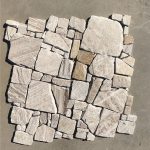Introduction:
Bluestone has long been celebrated for its timeless appeal and durability, making it a popular choice for a wide range of architectural and landscaping applications. In recent years, advancements in technology have led to the development of cultured bluestone, a versatile and sustainable alternative to natural bluestone. This article aims to delve into the world of cultured bluestone, exploring its unique characteristics, benefits, applications, and maintenance requirements.
1. Understanding Cultured Bluestone:
Cultured bluestone is a man-made product that replicates the look and feel of natural bluestone through a meticulous process of manufacturing. https://www.fs-slate.com/ledgestone/ is composed of a blend of natural stone aggregates, cement, and pigments, which are carefully mixed and molded to mimic the appearance of authentic bluestone. The result is a product that closely resembles natural bluestone in color, texture, and durability.
2. Benefits of Cultured Bluestone:
- Cost-Effective: Cultured bluestone is generally more affordable than natural bluestone, making it a budget-friendly option for homeowners and contractors.
- Versatility: Cultured bluestone is available in a wide range of shapes, sizes, and colors, allowing for endless design possibilities.
- Consistency: Unlike natural bluestone, which can vary in color and texture, cultured bluestone offers consistent quality and appearance throughout the entire installation.
- Sustainability: Cultured bluestone is an environmentally friendly choice, as it reduces the need for quarrying natural stone and minimizes waste during production.
3. Applications of Cultured Bluestone:
Cultured bluestone can be used in a variety of indoor and outdoor applications, including:
- Flooring: Cultured bluestone tiles are a popular choice for kitchens, bathrooms, and living areas, adding a touch of elegance and sophistication to any space.
- Paving: Cultured bluestone pavers are ideal for patios, walkways, and driveways, providing a durable and visually appealing surface for outdoor areas.
- Wall Cladding: Cultured bluestone can be used to create stunning accent walls, fireplace surrounds, and exterior facades, adding texture and character to any design.
4. Maintenance of Cultured Bluestone:
To ensure the longevity and beauty of cultured bluestone, proper maintenance is essential. Here are some tips for caring for cultured bluestone:
- Regular Cleaning: Sweep or vacuum cultured bluestone surfaces to remove dirt and debris. For stubborn stains, use a mild detergent and water solution to clean the area.
- Sealing: Apply a quality sealer to cultured bluestone surfaces to protect against stains, moisture, and UV damage. Reapply the sealer as needed to maintain optimal protection.
- Avoid Harsh Chemicals: Avoid using acidic or abrasive cleaners on cultured bluestone, as they can damage the surface and affect its appearance over time.
5. Comparison with Natural Bluestone:

While natural bluestone has its own unique charm and authenticity, cultured bluestone offers several advantages in terms of cost, consistency, and sustainability. It is important to weigh the pros and cons of each option based on your specific project requirements and budget considerations.
6. Conclusion:
Cultured bluestone is a versatile and durable alternative to natural bluestone, offering a cost-effective and sustainable solution for a wide range of design applications. Whether used for flooring, paving, or wall cladding, cultured bluestone adds a touch of elegance and sophistication to any space. By understanding the characteristics, benefits, applications, and maintenance requirements of cultured bluestone, you can make an informed decision when selecting materials for your next project.
